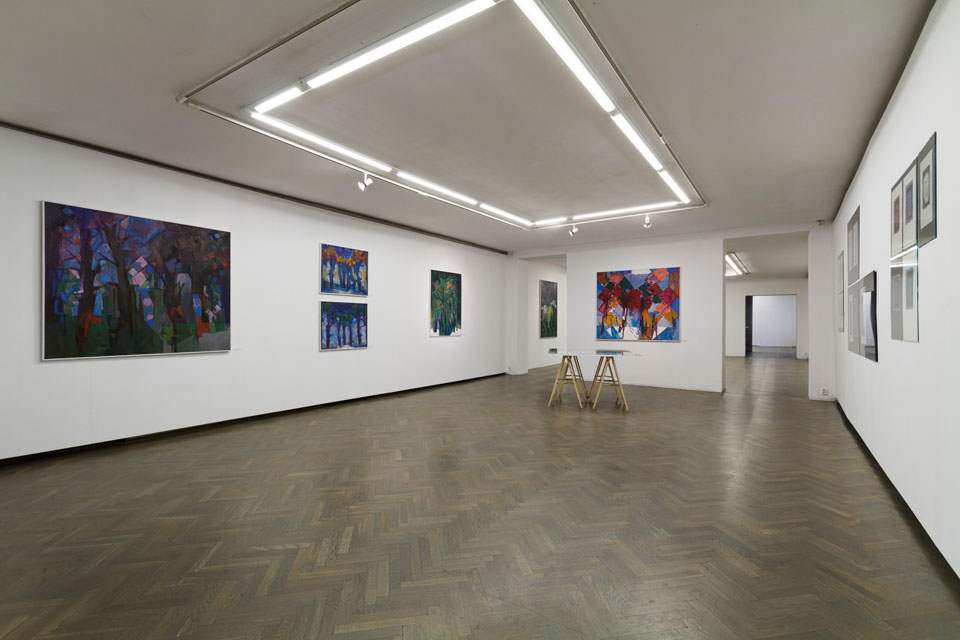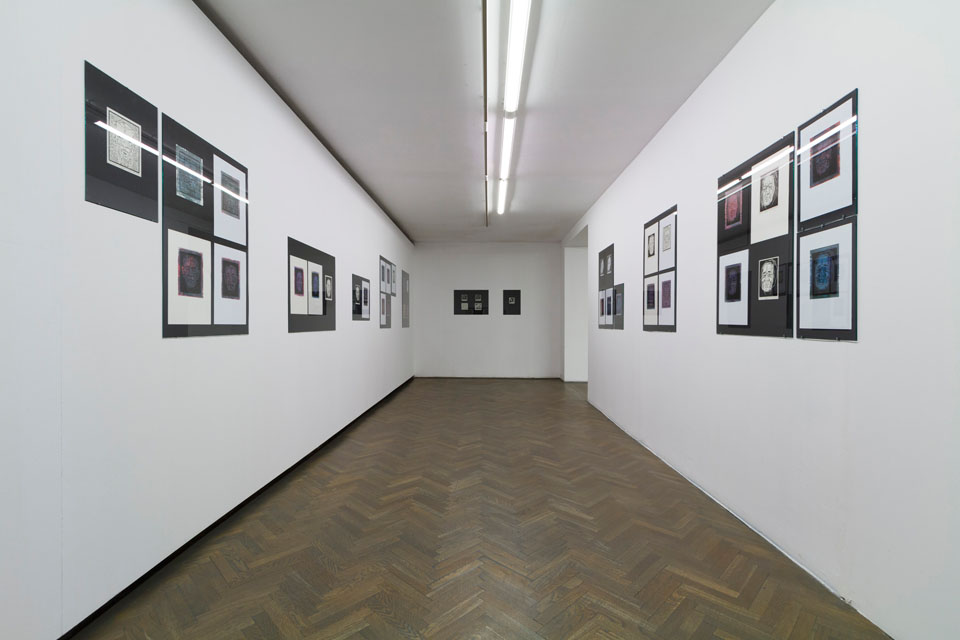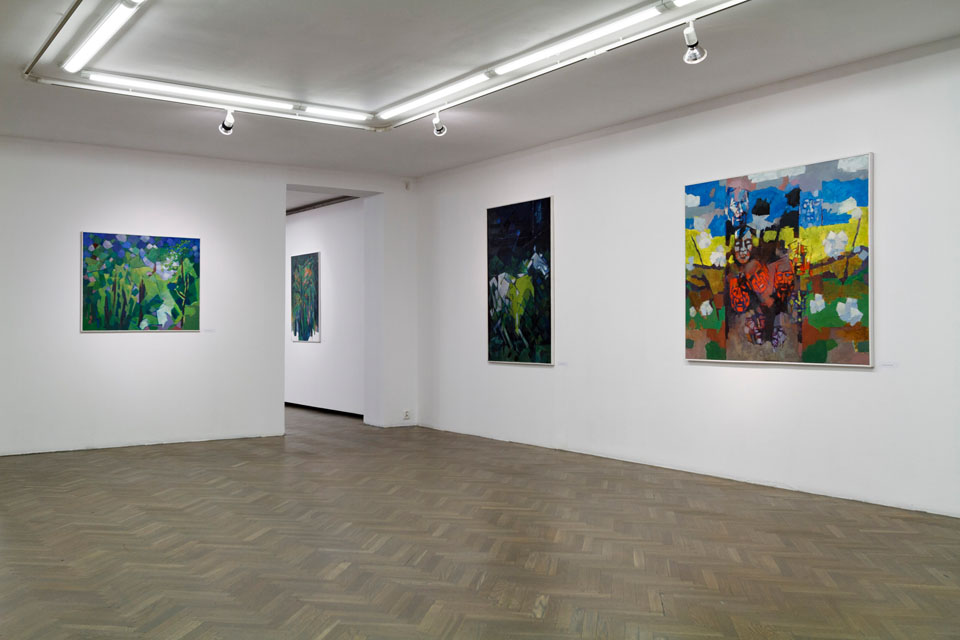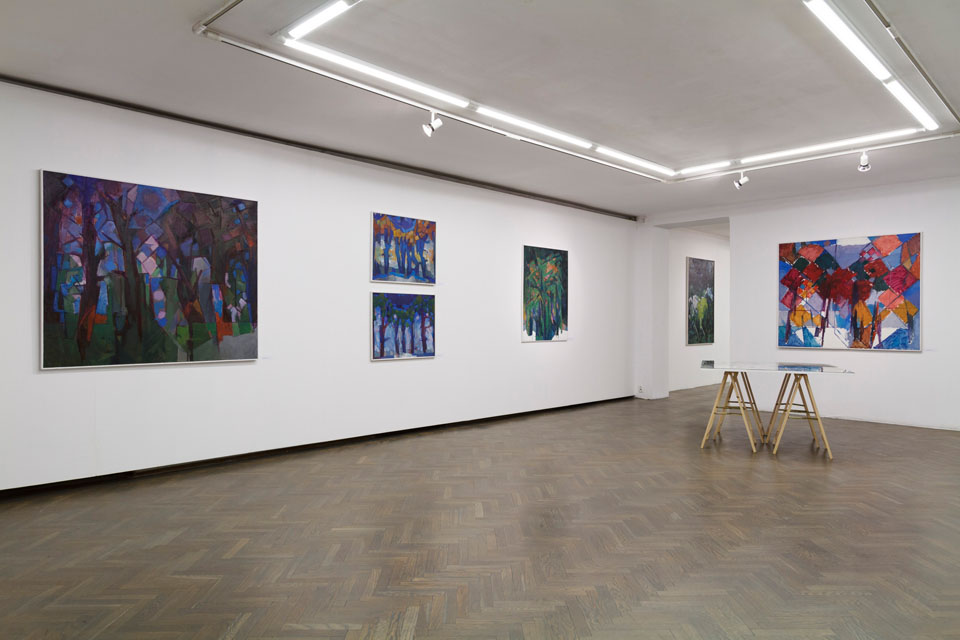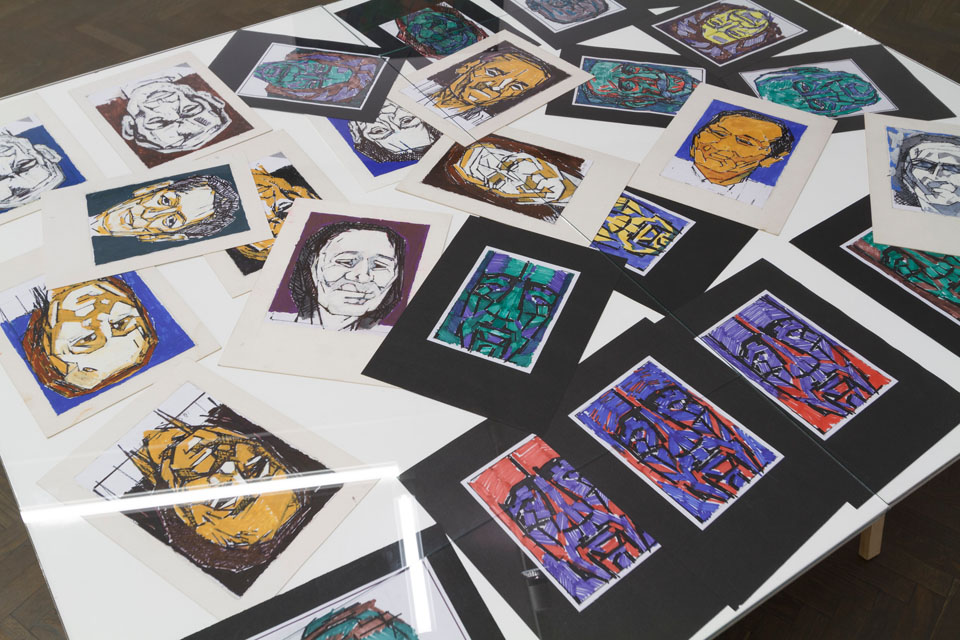WIESŁAW JURKOWSKI – Form and Colour. Reinterpretations
Wiesław Jurkowski – a painter, graphic artist and puppet theatre scenographer. Graduate of the State Higher School of Fine Arts in Gdańsk (1964). Associated with the Podlachia region since his childhood. His influence on cultural life in Białystok is indisputable. For decades he has produced an intellectually and emotionally charged art which originates from heartfelt creative need and is based on impeccable technical ability.
Jurkowski’s painting springs from deep reflection on the surrounding reality and is pervaded with meanings. He proposed intriguing colouristic and compositional solutions both in his early paintings and in his much later works. His technical dexterity, respect of tradition and, above all, an clear individual style founded on extraordinary sensitivity to form are evident. In addition, his works show a repertoire of topics which are characteristic of Jurkowski’s imaginarium; some of them can be associated with the universe of folk imagination (e.g. the human and animal figures whose forms refer to folk sculpture), while others allude to the painterly tradition of the last few centuries (e.g. nudes, horses). Importantly, seemingly obvious inspirations and motifs find a new formula in his oeuvre; Jurkowski has succeeded in imbuing them with new, fresh meanings.
Jurkowski’s graphic output, in turn, offers an overview of classic techniques, of which he has a nearly perfect command. His woodcuts are the very essence of the art of the woodcut. He has mastered the process of preparing the matrix to an incredible degree. His line is decisive, his selection of material unconstrained and faultless. He uses black and white with great sensitivity and thus renders them extraordinarily powerful. The form of his works goes hand in hand with their contents. The woodcut, one of the simplest and cheapest printing techniques, has been used in folk art for centuries. References to this art are almost always clearly discernible in Jurkowski’s works. Both the simple yet powerfully expressive forms and the messages of his works, which often refer to the religiosity and imagination of Podlachian villagers, originate from folk art. Jurkowski has a profound understanding of the universe of traditional values, but he reinterprets them in his very own manner. His technical dexterity is evident in other techniques as well. In copperplate or drypoint prints, his line is very different in its expression from the line he uses in woodcuts. These works constitute a universe of detailed images rendered through fine shading, which are more realistic, although imbued with an oneiric aura.
Stage design, in which Jurkowski has been involved since 1971, the year he began his cooperation with the Białystok Puppet Theatre, is a separate theme in his oeuvre. Over the years, he completed more than a hundred scenographic projects, including ones that entered the canon of puppetry art in Poland. His stage designs for children and adults are a tour de force of strict theatrical thinking. In effect, Jurkowski’s puppets are perfectly designed, convenient for the puppeteer to animate and, above all, truly magnificent to see. They invite the spectators into a rich world of associations, emotions and visual sensations.
Works produced by Jurkowski in the last five years prove that their author’s deep and unceasing involvement in his vocation. Jurkowski does not rest on his laurels; he is very obviously not bored with art. Neither did he lose the will to develop his own personality and to seek solutions regarding painting or graphic techniques which he would consider the best. His recent works emanate freshness. They convey intense receptiveness to impulses and the desire to fittingly translate them into the language of art. The colour range of his recent paintings is captivating. Never before did Jurkowski use such clear, predominantly bright colours; nor did he allow himself such compositional freedom. During the past twenty years, his painting was based on geometrical forms and expressive lines which at times were carried out in such a way as to create the impression of being forced or produced as a result of a tremendous intellectual effort, hesitancy or anxiety. Jurkowski’s recent works, in contrast, are more impressionistic; improvisation and unconstrained brushstroke prevail over the angular, crystalline, heavy structures familiar from his earlier canvases. His landscapes, in particular, are created with less strictness than before; they are freer and often exude the vitality of nature. In graphic works, Jurkowski plays with forms and techniques. In copperplates, he returns to realistic imaging typical of the early phase of his creative production and he experiments at the same time. His woodcuts are still held in his signature stylistics, but he introduces colour into them and copies them on paper covered with print. The focal point of his interest has moved from folk motifs to portraiture. His woodcuts have recently been dominated by the synthetic, powerfully expressive representations of the faces of actual persons.
Wiesław Jurkowski is not obliged to do anything any more. He does not compete or engage in rivalries. He creates art because creating art is his passion; because he likes doing what he does. With more then five decades of artistic achievement behind him, he is able to concentrate on creatively approaching his own output and his own experiences by reinterpreting motifs which he has so successfully used for many years.
Kamil Kopania
Wiesław Jurkowski
Born May 4th, 1939 in Oleszkowo (near Białystok), Poland. Studied at the Painting Department at the PWSSP (State Higher School of Fine Arts) in Gdańsk. Graduated with honourable mention in 1964.
solo exhibitions
Printmaking – Białystok, 1964; Painting – Białystok, 1967; Drawing – Białystok, 1969; Printmaking – Varna (Bulgaria), 1971; Painting – Gdańsk, 1971; Painting – Warsaw, Kordegarda Gallery, 1972; Painting – Białystok, 1973; Painting – Białystok, 1978; Puppet Theatre Scenography – Białystok, 1983; Painting – Białystok, 1987; Watercolour – Białystok, 1990; Painting – Białystok, Arsenal Gallery, 1993; Watercolours – Białystok, 1995; Painting – Białystok (exhibition “Image”), 1995; Painting and Scenic Designs – Białystok, Arsenal Gallery, 1999; Painting – Warsaw, Delfina’s Gallery, 2001; Painting and Woodcuts – Białystok, Arsenal Gallery, 2006/2007; Scenic Designs – Białystok, Białystok Puppet Theatre, 2010; “Wiesław Jurkowski. Seventy Plus” – Białystok, Arsenal Gallery, 2010.
group exhibitions
All-Poland Exhibition of Painting and Printmaking – Bielsko-Biała, 1965 (bronze medals in painting and printmaking)
1st and 3rd International Print Biennial – Krakow
2nd Drawing Triennial – Wrocław, 1968 (honourable mention by the Ministry of Culture and Art)
Young Painting Festival – Sopot, 1968 (Białystok Voivode Award)
4th All-Poland Białowieża Plein Air – Białowieża, 1968 (medal for the set of works)
2nd All-Poland Exhibition of Young Painting – Rzeszów, 1968
10e Salon international de Paris-Sud, Juvisy – Paris, 1969 (golden medal for the group of Polish painters)
1st and 2nd Exhibition of Zbrojownia Group – Białystok, 1969, 1971
“Bielska Autumn 1972”, 10th All-Poland Painting Exhibition – Bielsko-Biała, 1972
“Copernicus – The Universe”. All-Poland Painting Exhibition – Toruń, 1972
5th Biennial of the Polish Poster – Katowice, 1973
6th Golden Grape (exhibition “Signal”) – Zielona Góra, 1973
Exhibition “400 Artworks for Quadricentennial of Zakopane” – Zakopane, 1978
Artistic milieu exhibition – Sambor, 1979
Exhibition of Polish Painting – Budapest, 1980 (from the collection of BWA Białystok)
Exhibition “DOM” (House/Home) – Białystok, BWA “Arsenał”, 1989
16th Festival of Polish Contemporary Painting – Szczecin, 1996
Exhibition of puppetry scenography “The World of Polish Nativity Scenes” – Budapest, 1996
Warsaw Painting Month (ZPAP Gallery) – Warszawa, 1997
Polish Puppet Theatres Scenography – Bielsko-Biała, 1997
“Uroczysko” Meetings with Art and Nature – Supraśl, 1998, 1999
White Salon of Fine Arts. Białystok – Łomża – Suwałki, 1998
“No-one Will Give These Years Back” – Arsenal Gallery, Białystok, 2000
White Salon of Fine Arts. Triennale 2001 – Białystok – Łomża – Suwałki, 2001
“In the Theatre and by the Theatre” – Arsenal Gallery, Białystok, 2003
Exhibition of Theatre Scenic Design – Łódź, 2005
“The Fairy-tale World of Andersen” – State Ethnographic Museum, Warszawa, 2006
scenography
Since 1970 he has been scenographer of the Białystok Puppet Theatre. He created scenic designs for puppet theatres in Gdańsk, Lublin, Łódź, Krakow, Olsztyn, Wałbrzych, Rabka, Warsaw (Poland), Varna (Bulgaria) and Kyiv (Ukraine).
awards
Białystok Voivode Award “For Achievements in Fine Arts and in Puppetry Scenic Design”, 1977.
Polish Prime Minister Award “For Artistic Output for Children and Youth” – for outstanding achievements in puppetry scenic design, 1985.
The Mayor of Białystok Award, 2000.
Honorary Badge of Merit for Polish Culture awarded by the Minister of Culture, 2003.
Silver Gloria Artis Medal for Merit to Culture awarded by the Minister of Culture and National Heritage of the Republic of Poland, 2009.
Media patrons:

Wiesław Jurkowski

PLAN YOUR VISIT
Opening times:
Thuesday – Sunday
10:00-18:00
Last admission
to exhibition is at:
17.30


